Have you considered offering more than one learning format for your certification exam preparation programs? Studies have shown that learning styles vary from person to person, and everyone has unique demands on their time. Self-study courses offer flexibility and autonomy, allowing learners to learn where and when they have time. On the other hand, instructor-led courses offer personal interaction, feedback, exploration of complex concepts, and networking opportunities. Instructor-led courses also give local chapters an opportunity to support and engage with local members.
When you’re first developing a program to prepare candidates for certification, self-study is a great place to start. Transforming that content into successful and effective instructor-led materials takes intentional planning and development processes, but they’re worth the effort!
To get you started, we’re going to share key questions, considerations, and development steps we’ve honed over the years.
Key Questions to Guide Your Content Transformation
At the start of the instructor-led material development process, it is important to begin with the end in mind. In our decades of creating these materials here at Holmes Corporation (HC), we have identified the key information necessary to ensure that the end product meets our standards. At a high level, we work to gather the following information:
- The scope of the program. Does the program cover the entirety of the content that the self-study program does, or should it focus on a specific portion (an individual module, or areas that students are known to struggle with compared to the rest of the program)?
- The goals of the program. Is the instructor-led program intended to be a supplement to the self-study program, or will it function as a full alternative on its own?
- The applicability of the self-study program. Does the self-study program lend itself to any particular type of delivery method for use in an instructor-led program? For example, do the materials feature examples that could be useful for the creation of case studies or group work?
- The delivery method of the program. Will instructor-led sessions be in-person, hybrid, or virtual?
- Any overlap with other intended or extant programs. Is a single in-person program being developed, or are there multiple concurrent programs (i.e., will learners be able to choose between a multi-day comprehensive program and a single-day “crash course”)? How can assets be developed and managed to work for multiple programs?
- How long sessions will be and how they are structured. Will the total classroom time be in hours? If more than a day’s worth of time, will the days be consecutive or weekly? Will arrangements need to be made for break times or lunch times?
- The skill and experience levels of instructors. Is there a minimum qualification or experience level that instructors will have?
- The background of the expected learner. Is the class geared towards individuals already established in their careers or those just starting out and looking to enter the field? How can the instructor best be supported when they have classes with learners of varied levels of experience?
- Whether a practice exam will be offered. If so, how many questions should be created for the exam? How much time should be allotted?
- The expected update or change cadence to the underlying self-study materials. Are the materials updated annually or more or less frequently than that?
The information gathered through asking these questions will be used both in creating the foundation of the program and executing the fine details of the final deliverables. Falling short on either front is likely to lead to sub-par experiences for students and instructors and potentially lead to additional costs in re-development in the future.
The answers to these questions are also necessarily interrelated. For example, if the goal of the instructor-led program is to eliminate the need for learners to also utilize the self-study program, the instructor-led program is unlikely to meet that goal if the planned instructional session is 8 hours of time in a single day. A program led by relatively inexperienced instructors must have much more structure on the “back” end to empower the instructors to respond to learner questions quickly and efficiently. But if the expected update cadence is annual (or more frequent), care must be taken when doing so to not create an unnecessarily large update burden.
Developing Materials to Serve Instructor and Student Needs
Next, the development work can begin. Utilizing the information you’ve gathered, begin reviewing the content for key information that should be included. Pull that information into the delivery tool of choice (i.e., Microsoft PowerPoint, Prezi), and work with it to create visually engaging and succinct materials to be delivered by the instructor. The number of slides that can be reasonably presented per hour and the number of active learning course hours guide how many slides will be needed per area of the self-study material.
Create notes and other materials for the instructor to use to quickly reference the more in-depth self-study materials. Prepare activities to enhance the classroom experience and give learners the opportunity to interact, review, and practice the materials they are learning. Create a flexible but specific schedule to help both instructors and students understand the speed at which they should be moving through content to cover it all in the allotted time. Design and include ancillary materials to provide instructors the flexibility to adapt the program to the needs of the specific session they are leading.
Certainly, the process may feel daunting with all the planning and development tasks necessary to create a successful program. This is where utilizing a partner experienced in this process, like HC, can reduce your overall investment and result in a better, more robust product. By taking the content you already have, we can develop high-quality instructor-led materials that fit your specific goals and needs.







